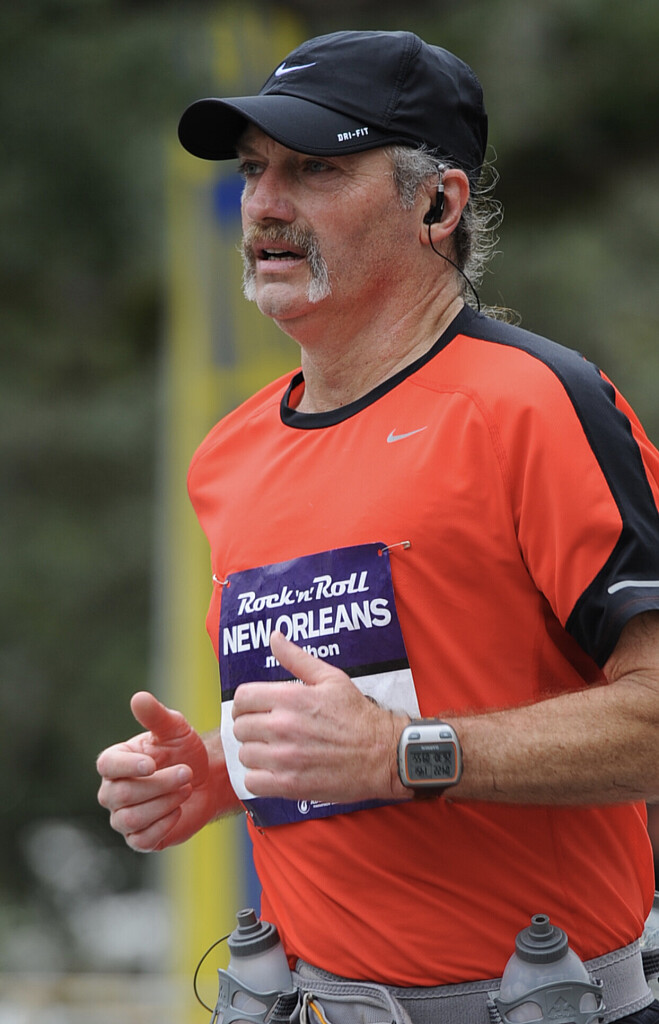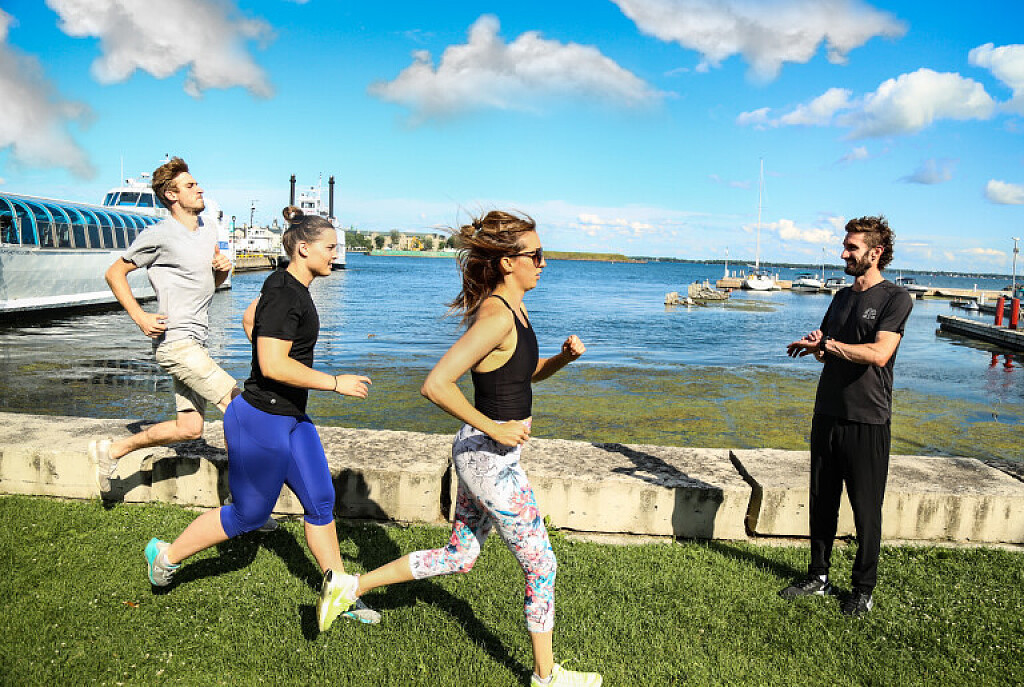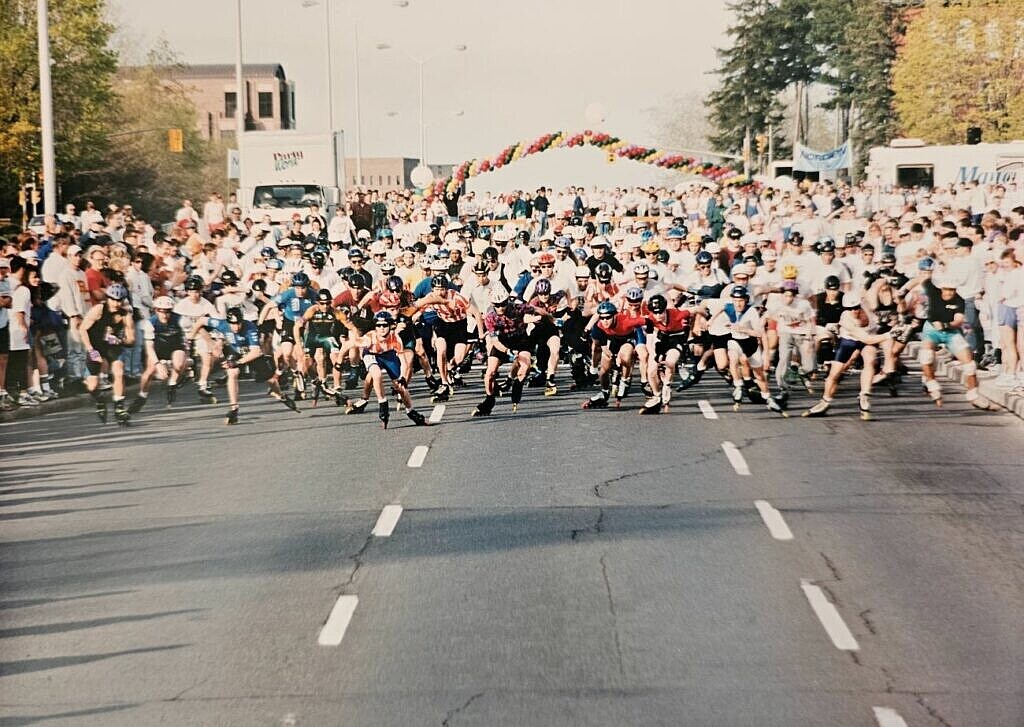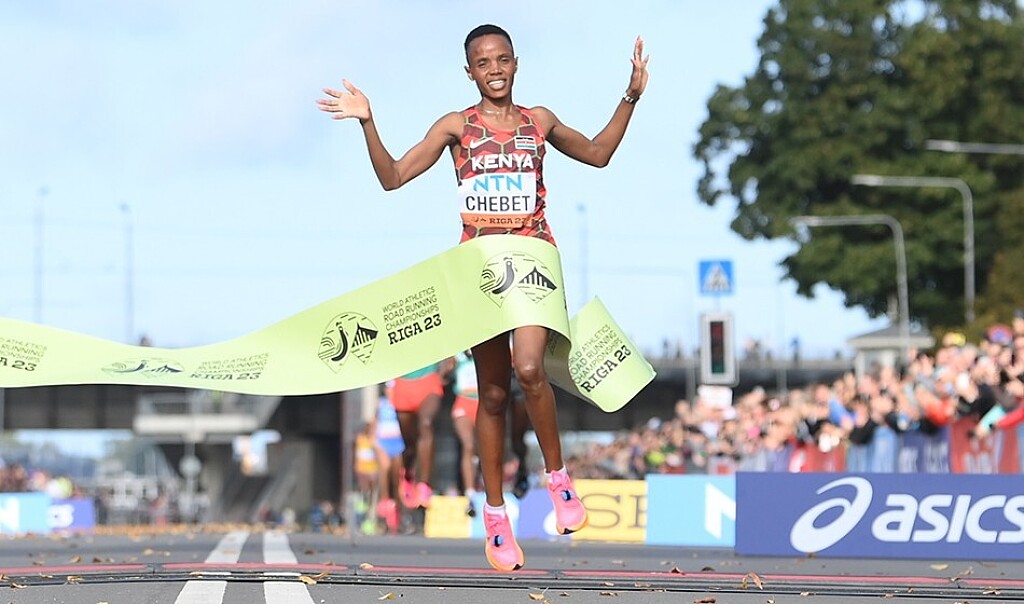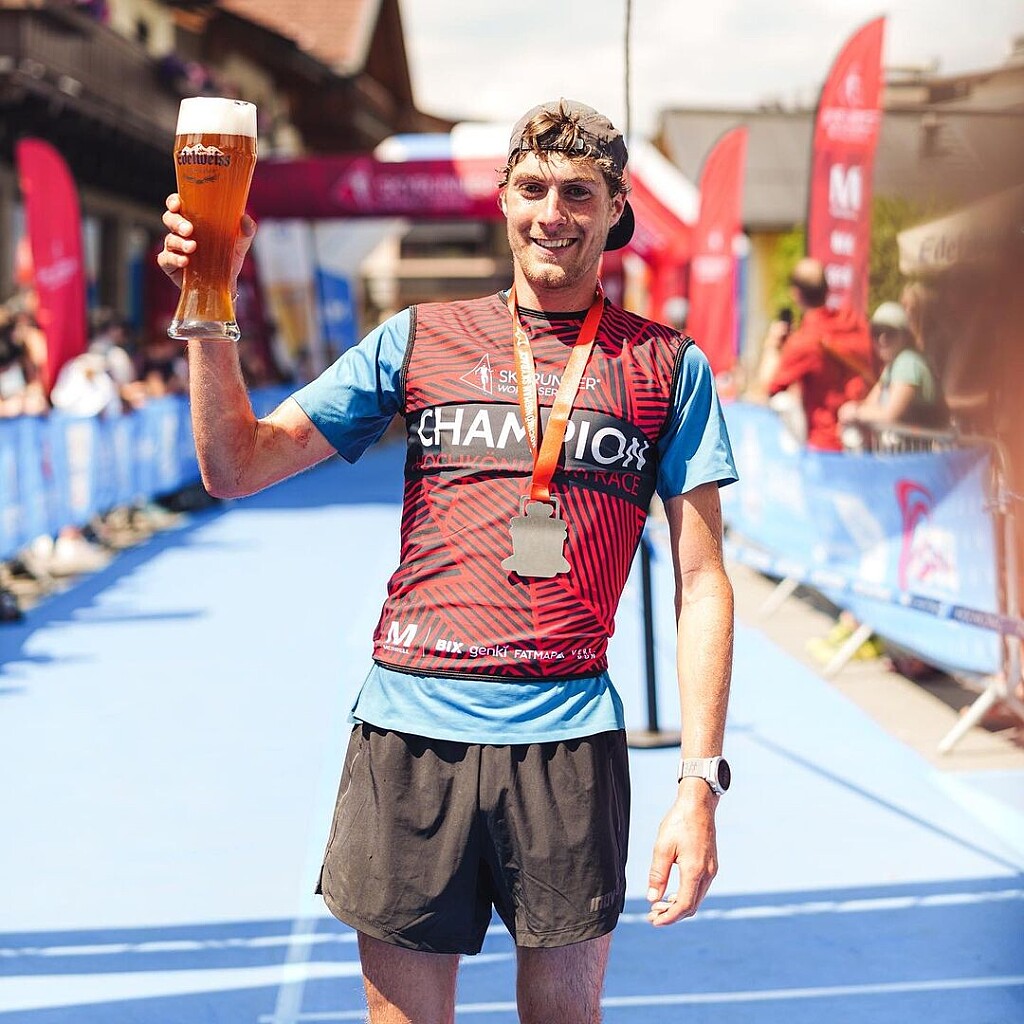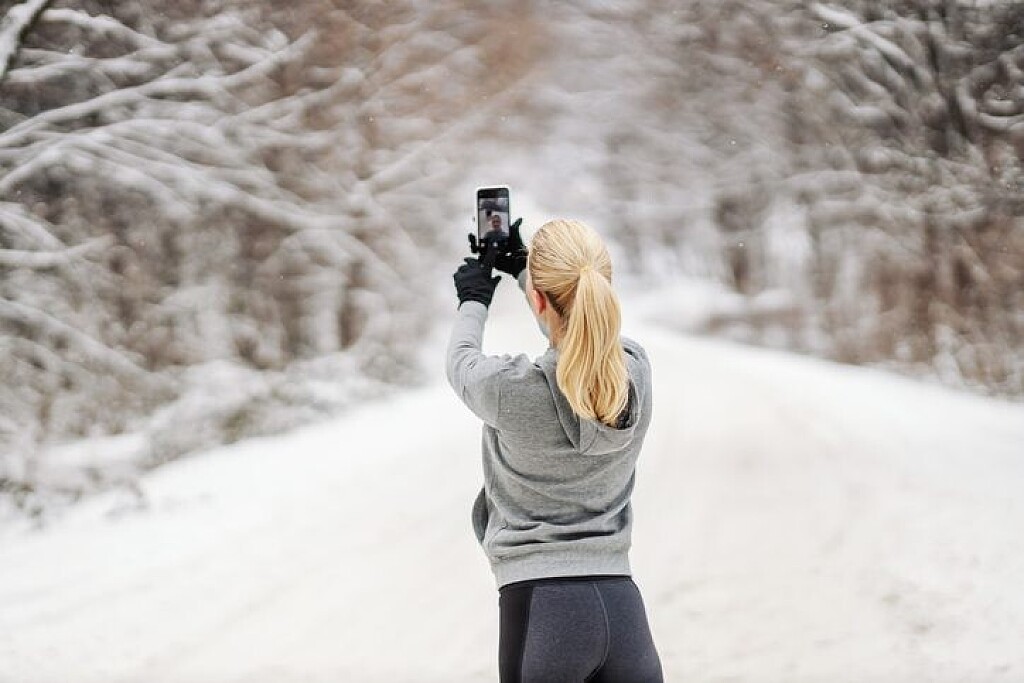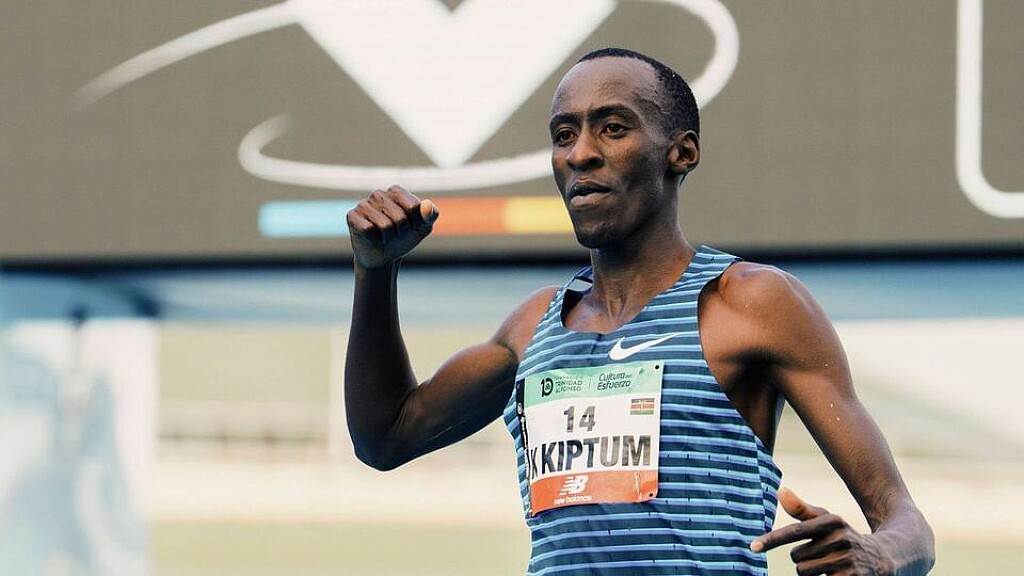Running News Daily
Top Ten Stories of the Week
1/6/2024
These are the top ten stories based on views over the last week.
How to Go From 5k to Marathon: Tips From an Expert
Ramping up in distance from a 5k to a marathon is a significant step, and it requires careful planning and gradual progression to avoid injuries and ensure success.
Build a Running Base
Building your aerobic base is one the most important things you can do when aiming for a longer race. Building this base will help you get stronger and build your endurance so you can handle longer, slower efforts.
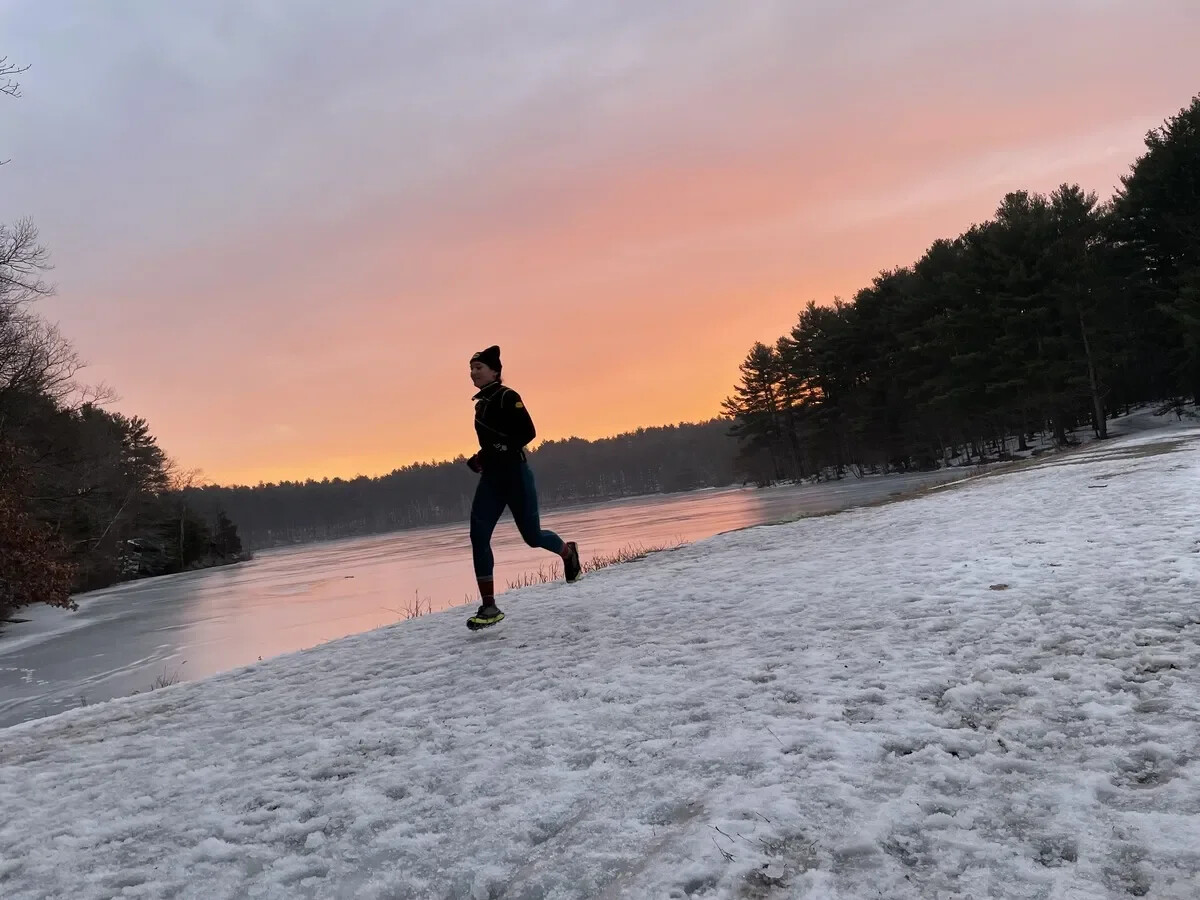
Set Realistic Goals
Establish realistic short-term and long-term goals. Consider running a 10k and a half marathon before attempting a full marathon. This allows you to gain experience with longer distances.
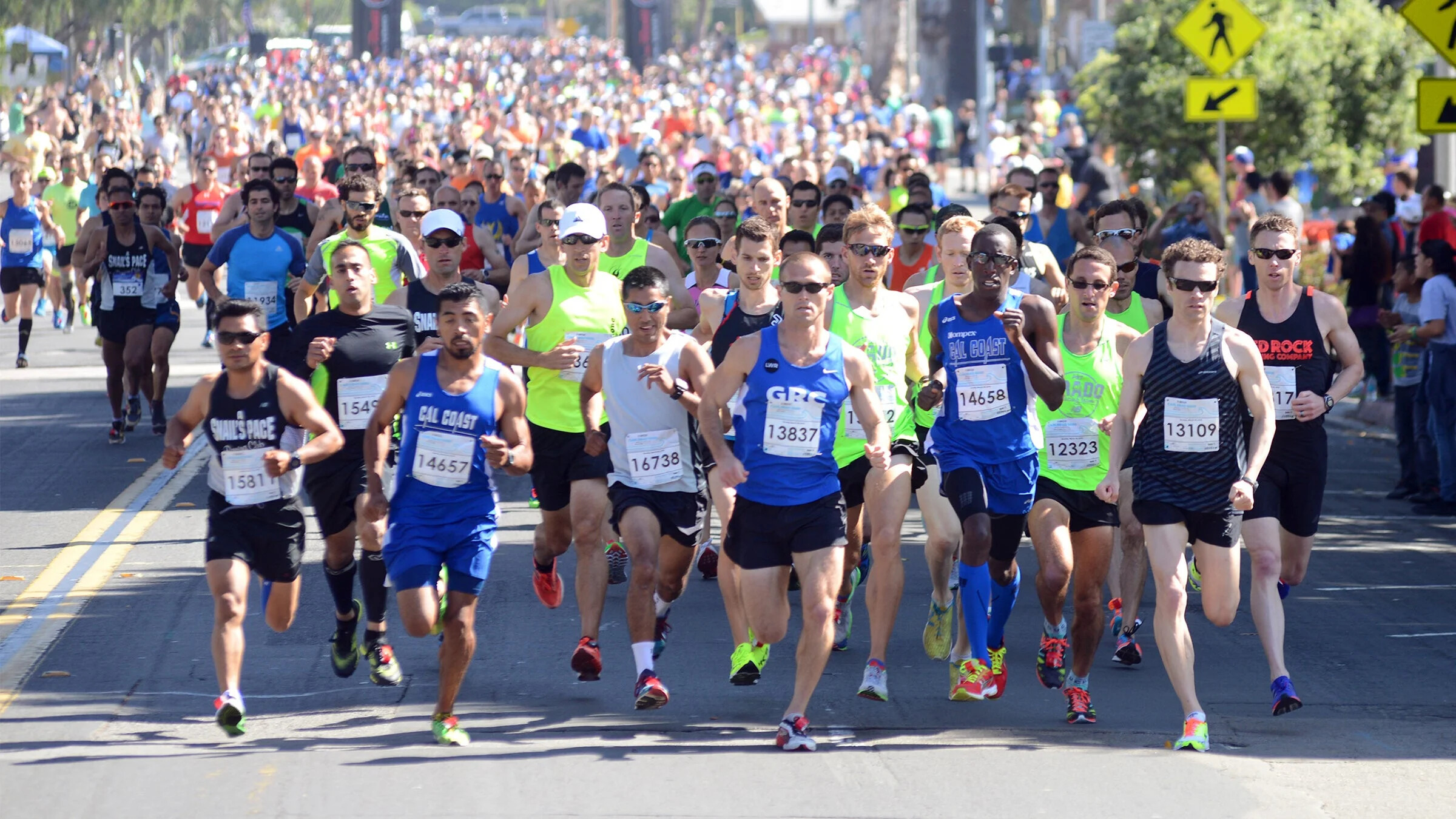
Increase Mileage Gradually
Gradually increase your weekly mileage by no more than 10% each week. This helps prevent overuse injuries and allows your body to adapt to the increased workload.
Consistent Running
Aim for at least 3-4 days of running per week. Include a mix of easy runs, tempo runs, interval training, and a long run.
Long Runs
Incorporate a weekly long run into your training. Increase the distance of your long run by 1-2 miles every 1-2 weeks. Every 3-4 weeks, scale back the distance to allow for recovery.
Cross-Training
Include cross-training activities like swimming, cycling, or strength training to enhance overall fitness and reduce the risk of injury.
Rest and Recovery
Allow your body time to recover by scheduling rest days into your training plan. Listen to your body, and if you feel fatigued or notice any signs of injury, take extra rest.
Nutrition and Hydration
Pay attention to your nutrition and hydration. Proper fueling is crucial for longer distances. Experiment with nutrition during your long runs to find what works best for you.
Practice Race Conditions
As you approach longer distances, simulate race conditions during your training. This includes practicing your nutrition and hydration strategies and running at your goal marathon pace.
Tapering
In the weeks leading up to the marathon, gradually decrease your mileage to allow your body to recover and be fresh on race day.
Mindset
Develop a positive mindset. Mental strength is crucial for marathon training. Visualize success, break the race into smaller, manageable segments, and stay focused on your goals.
Race Day Planning
Plan your race day strategy, including pacing, nutrition, and hydration. Stick to a pace that allows you to finish strong, especially considering the longer distance.
Remember that everyone’s body responds differently to training, so be attentive to how your body feels and make adjustments as needed. If possible, consult with a coach or an experienced runner for personalized advice based on your specific circumstances.
(12/30/23) Views: 184Laurel Walker
Running May Have Saved My Life
Nearly 50 years ago I fell in love with running. I was far from a natural. When I was 8 years old, I was struck by an illness that left me with pneumonia in both lungs with one lung being collapsed. I survived that but was left with asthma that persists to this day. This was unfortunate as I loved sports. Asthma more or less disqualified me from participating in “running sports, " leaving me only with baseball as something I could do relatively comfortably.
In high school, I wanted to try wrestling. I figured that I could handle three 2-minute periods. However, I would soon learn that a lot of the training involved running and I struggled mightily to keep up with the other kids early in the season. The next season I hit upon the idea to ask our cross-country coach if I could train with that team, though not be part of the team. In this way, I could be conditioned before the start of wrestling season. And during wrestling season, I would show up two hours before the match to check my weight and run 2-4 miles before weigh-in.
I graduated high school, but the running never stopped. I ran every weekend (4-10 miles each day) for decades. Running was so important to me that when setting up one of my company offices in Japan, I purposely chose a location in a place with a suitable place to run, near the Emperor’s Palace near Tokyo Station. The palace is surrounded by a circular (3km) moat that is a popular running destination. My ritual was that after a week of business, I would do four laps around the palace and then fly home to San Francisco.
Though I loved running I was never interested in racing until about age 50. In 2010, my new son-in-law invited me to join him in a 5K fun run in Lafayette. Passing all those 20-year-olds was all I needed to get the “bug.” I went on to run many dozens of races over the next years, mostly marathons, an ultra, and a triathlon. I was in the best shape of my life, rarely got sick, and was at the top of the world. That would change dramatically.
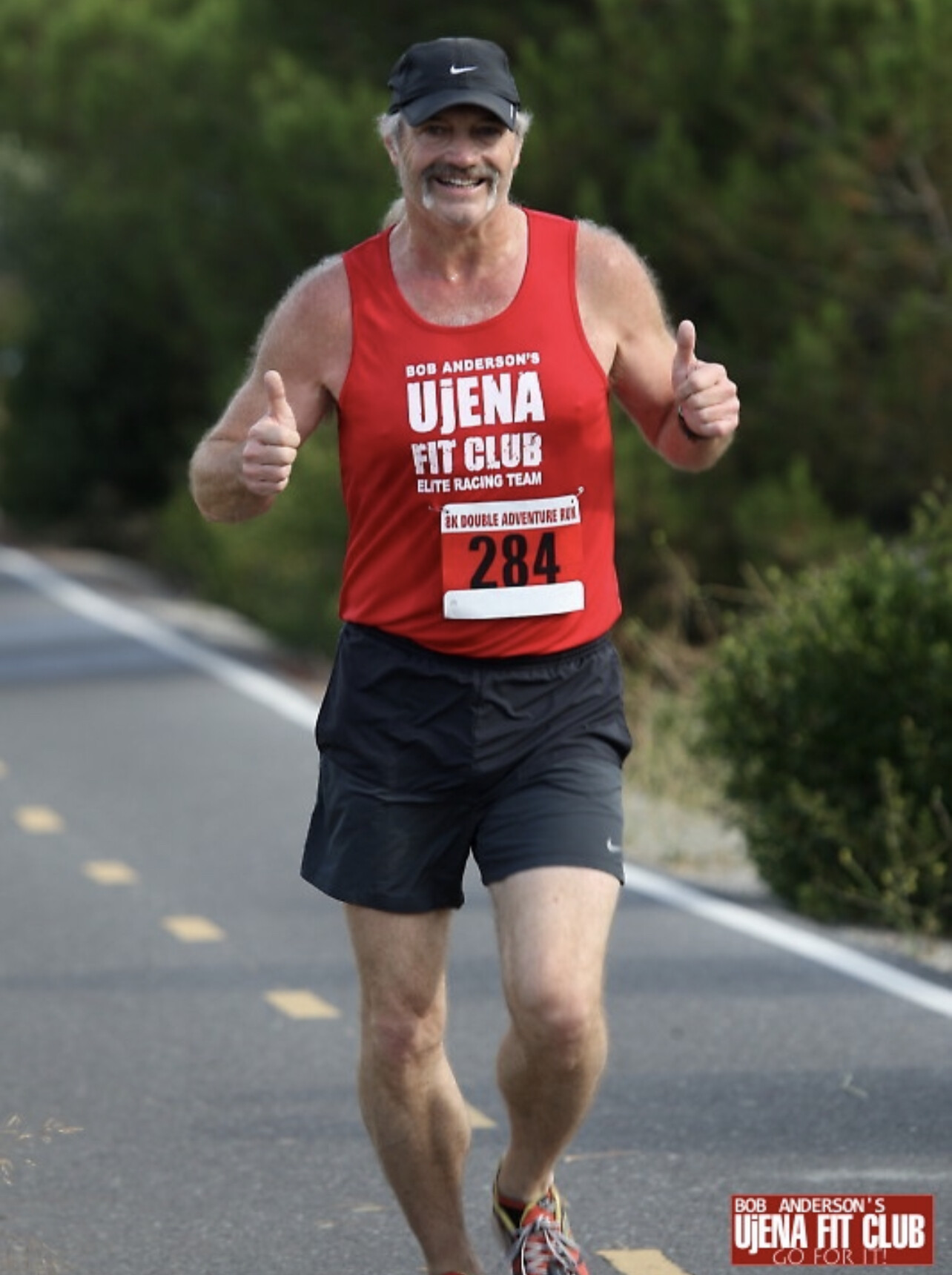
In 2013, I started noticing that on some days I would experience a strange fatigue that required me to take a walking break. I remember one day that I cut one of my runs short because I was disgusted with my performance. I kept my running clothes on and decided that I would try again later that day. That was the time I set a new PR for that training course. Something was not right, and these episodes of fatigue were increasing in frequency.
The last marathon I ran was in April 2016, a miserable affair clocking in a 4:53. By September, I couldn’t run a mile without a break. I complained to every doctor I met that “something was wrong”, but the standard response was that I was just getting older and I needed to lower my expectations. Even a cardiologist I had seen 10 years earlier told me that there was nothing wrong with me and even quipped “Guys like you are bad for business.” I wasn’t amused.
Finally, in 2019, my asthma doctor recommended a private practice cardiologist in Los Altos who might be willing to work with me. She spent two hours examining me, including an EKG and blood work. She found no problems but listened to my story about my newfound exercise intolerance. She said the only way to get to the bottom of it was to put me under a cardiac stress test.
I showed up at the hospital and they were ready for me. My doctor was there along with two technicians: one to operate the treadmill and monitor the EKG, and one with an echocardiogram scanner for a pre- and post-test scan of my heart. About 15 minutes into the test, about the same interval that I would experience fatigue during a run, the EKG technician exclaimed “Doctor!” and ran out of the room. The doctor told me to stop, asked me if I was OK, and asked me to lie down and have the other technician scan me.
The EKG technician quickly reappeared with defibrillating paddles and was stunned that I was calmly talking to the doctor. The cause of my fatigue was now clear– I was having a heart attack. A very deadly one at that, called Ventricular Tachycardia (VT) in which the top and bottom chambers beat at different rates causing your heart to stop pumping.
Now that the mystery was solved (I was not “fine”), we needed to identify the cause of this electrical misfiring. I was then directed to a cardiac electrophysiologist (EP) that specializes in this sort of disorder. He also took several hours to explain that there are nearly a dozen potential causes of this, and nearly all of them treatable. There was one (the least likely) however, that was not so easily treatable.
As it turns out, the least likely one Cardiac Sarcoidosis, was the one. This is a rare auto-immune disease that typically attacks the lungs but in even rarer cases can attack the heart. Lucky me. These “attacks” leave scar tissue on the heart that disrupts the normal electrical activity of the heart. My EP regretted telling me that this was out of his skill area and needed to refer me to Stanford where they have a cardiologist that specializes in this.
My experience at Stanford was great where a team of cardiologists took care of me. The first step was to see if the VT response to exercise was repeatable (it was). The second step was to confirm that sarcoidosis auto-immune cells were present in my body. The result of that test was positive. The cells were present, but the good news was that they were no longer in my heart and were “dormant.” But the damage was done. The final step was to install an implantable cardiac defibrillator (ICD) in my chest that has two wires screwed into the side of my heart. In case of a sustained VT episode, the ICD would automatically shock me back into rhythm.
My ICD was installed on February 12, 2020 shortly before the Covid lockdown. I cleared to begin running after about six weeks which I gleefully did after eight months of no running and four years of poor running. I am happy to report that I have had zero VT episodes, nor any other serious arrhythmias since the ICD was installed.
But my story is not quite over. Despite the lack of arrhythmias, my running performance has not returned to pre-sarcoidosis levels. I’ve worked with the Stanford cardiology team who have reiterated that my heart is working perfectly. With that ruled out, I asked for a referral to their pulmonary team to see whether there might be some lung function issues that are interfering with my return to normalcy. Like with my heart, I undertook a battery of tests looking for anything unusual.
The results of all these tests were that my lungs, despite a lifetime of asthma are working quite well. The penultimate step in this battery was a cardiopulmonary exercise test (CPET) that is most commonly used to test professional athletes. Despite my running complaints, the tests showed that my body was responding fairly well to exercise as I posted a 12.2 MET (Metaboloic Equivalent of Task).
I studied the voluminous data from the CPET and was struck by one thing– max heart rate. No, not the calculated 220-<age> that most runners are familiar with, but rather seeing that my heart rate levels off at 149 bpm and can go no higher no matter the stress. This is Father Time making his presence known. The reason I can no longer run as fast as I used to is because my heart can’t pump fast enough to generate the required oxygen to propel my body at those speeds. It's basic physics, so simple.
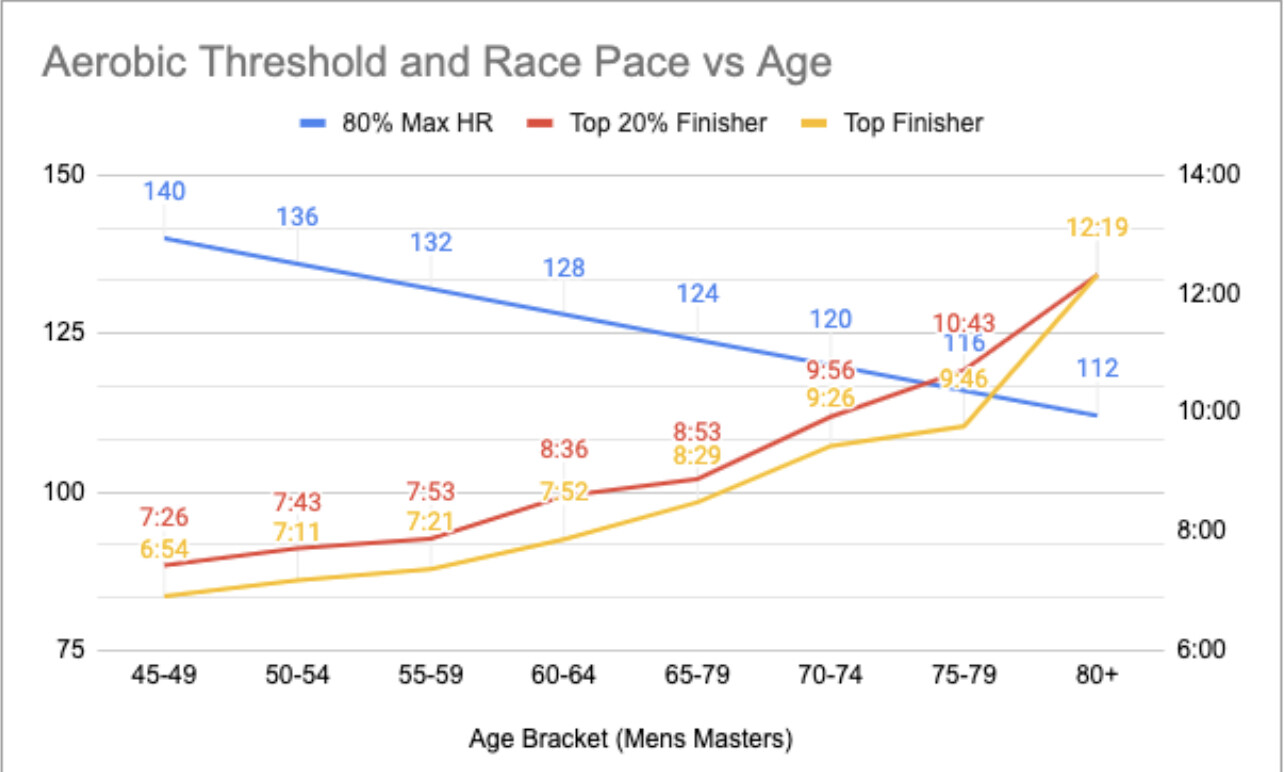
I decided to investigate this briefly and look at some representative races to see if I could see this in actual race data. I looked at the data from the California International Marathonfrom 2022 curious to see an age-related pattern. During my short racing career, I would typically place in the top 20% of my age bracket. I extracted data for Mens Masters into a chart to show Max HR vs. the top finisher and the top 20% finisher. This has given me some consolation that the slowdown is natural and will continue.
One more thing I’d like to share, especially with older runners. Since the ICD, I have found it hard to rebuild my aerobic base. I’ve concluded that the reason for this is that I was still trying to train like when I was a teenager back when my Max HR was 200! Somewhere in my memory banks, I recalled something about low heart rate training and quickly found the MAF methodby Dr. Phil Maffetone. In a nutshell, Maffetone advises training at ultra-low heart rates (180-<age>) to develop a core aerobic base. The process can take 3-6 months and involves running at an agonizingly slow pace (at first.) I am happy to report that this is the one thing that is working for me and for the first time in a long time I am again running with joy.
This has been a very personal story but one that I thought I should share with our running community. I feel that running may have saved my life. If I hadn’t challenged my doctors that I was not “fine” the worst could have happened. We runners know our bodies better than anyone and when something doesn’t feel right, it’s probably not. Don’t be afraid to aggressively advocate for yourself. Your life might depend on it.
(01/01/24) Views: 141Warren Savage
Neuroscientist Andrew Huberman’s 5 tips for optimal performance
Dr. Andrew Huberman, professor of neurobiology and ophthalmology at Stanford School of Medicine and host of The Huberman Lab podcast, believes in avoiding health trends, instead prioritizing five basic daily things to achieve peak physical and mental health. Huberman’s tips aim not only to help the general public become the best version of themselves, but also apply perfectly to runners. Here’s what you need to know.
1.- Sleep
“Everyone needs to get a sufficient amount of quality sleep,” Huberman recently said on The Nine Club podcast. He touts sleep as the best stress reliever, trauma releaser, immune booster and emotional stabilizer. He suggests following a consistent sleep schedule, making sure you are exposed to sunlight in the morning (more below), avoiding caffeine eight to 10 hours before bed and limiting naps to 15-20 minutes.
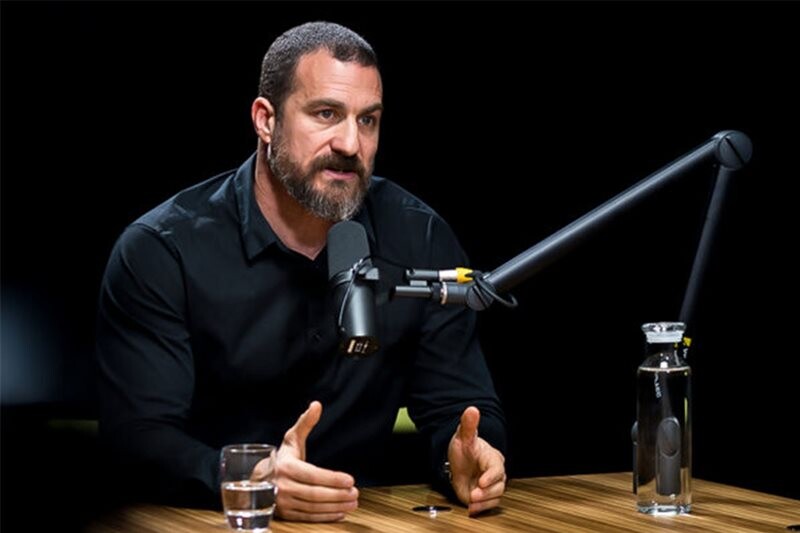
Huberman says most adults need between six and eight hours of sleep every night and suggests letting teenagers and young kids sleep as much as they want.
Key takeaway for runners: Sleep is critical for recovery and should be something runners focus on as much as their most intense training. During sleep, our bodies repair themselves from the microscopic tissue damage done while exercising; insufficient sleep can lead to injury, low energy availability and a struggle to improve. Delving into Huberman’s sleep tips can help you become a better sleeper, and therefore a better runner.

2.- Move more
“It is important to get enough movement. Get your heart rate up, get your breathing up. You’ll live longer, you’ll feel better,” Huberman says. Huberman suggests trying to get one hour of exercise daily, and incorporating strength training into your routine. “The natural decrease of muscle is one per cent per year after age 40, unless you intentionally offset through strength training,” Huberman explains.
Key takeaway for runners: Huberman’s advice doesn’t necessarily mean you should run every day. Try adding movement into your day whenever you can (take the stairs, park farther from your destination and walk for 10 minutes), and count cross-training (which includes brisk walking) toward your daily total. Gentle walking on rest days can help with the recovery process.
3.- Sunlight
Getting sunlight within the first hour of waking helps suppress the release of melatonin, a hormone that promotes sleep, while increasing alertness. For many of us in North America, it’s not light out when we wake up during the winter months, and it may not be sunny—but regardless of sunshine, focus on that outdoor light, and if you can’t be out in it as soon as you wake up, incorporate it into your day as early as possible.
Key takeaway for runners: While you certainly don’t need to be an early-morning runner to follow this tip, maybe this benefit will give you a boost to get out earlier more often.
4.- Nutrition
“Try to get 75 to 80 per cent of your food from non-processed or minimally processed sources,” Huberman says. He follows a diet that includes intermittent fasting, and while that doesn’t necessarily work for all athletes, intentionally eating meals at times they are most beneficial may help.
Key takeway for runners: Huberman is quick to point out that everyone is different, and it’s important to work with your own physical needs. Make sure you are taking in adequate nutrition for your energy output, and while a focus on unprocessed foods is clearly beneficial, lose any “food guilt” you have over taking in sugary gels or gummies during training and races–they are necessary for fuelling endurance efforts.
5.- Meaningful connection
“Do what you can to make the interactions you have, online and in reality, with friends, with family, as healthy as possible,” Huberman says, and emphasizes the importance of quality social connection. Feeling socially isolated and lonely has been shown to increase the risk of developing dementia, depression and anxiety, among other health conditions.
Key tip for runners: Embrace your local running community, or work on building stronger relationships with your running friends. If you don’t have access to a local running group, connect online with other like-minded individuals, but make sure to avoid negativity. For some of us, getting in a daily run as a stress reliever may be the tool we need to focus on healthier relationships with our non-running friends and family.
(01/04/24) Views: 126Keeley Milne
How to start running in 2024
Mile2Marathon coach and 2022 Around the Bay winner Kevin Coffey shares his tips for getting started.
January marks the time when many Canadians are considering starting a running routine, but is it as simple as lacing up your old sneakers and heading out for a jog? We spoke to Kevin Coffey, a Mile2Marathon coach in Kingston, Ont., Lululemon ambassador and the winner of the 2022 edition of Around the Bay (the 30K road race in Hamilton) to find out how new runners can get started on the right foot.
Before you start running

Before beginning your running routine, Coffey suggests assessing your medical history. Most people should be able to start a walk/run program right away without much trouble, but if you have any pre-existing injuries or limitations, he recommends consulting your doctor before starting, to avoid the scenario of having to abruptly halt your running program after just a few attempts.
“Before diving into a walk/run regimen, I usually suggest—though it may sound unconventional—to evaluate whether you’ve ever walked farther or longer than from home to the car,” says Coffey. “If this applies, I would recommend gradually building up to 30 minutes of walking before starting on a walk/run program.”
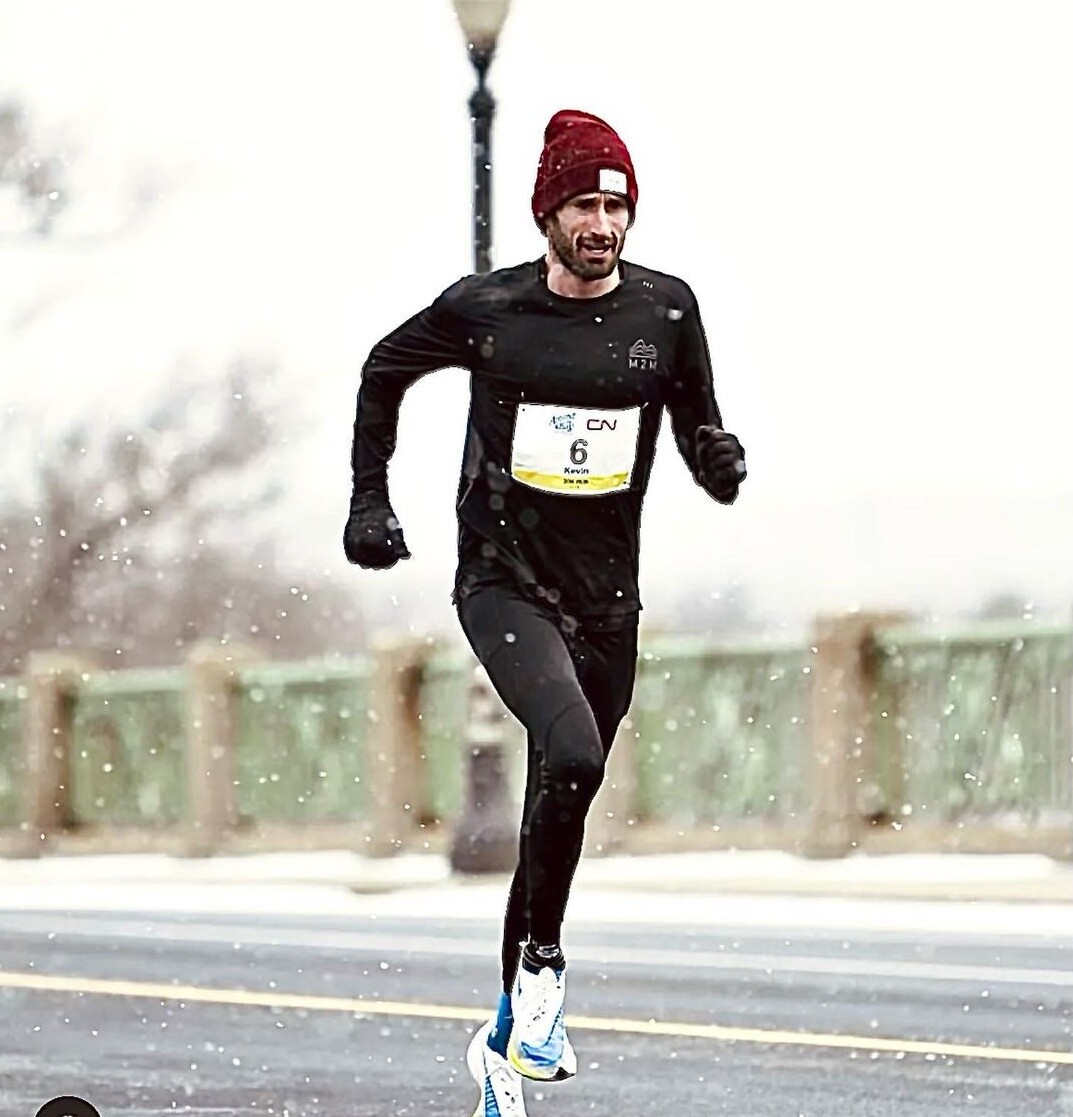
Getting started with run/walk
The run-walk method is popular and highly recommended for beginners. It significantly reduces the risk of injury by allowing for a lower heart rate and less strain on muscles, soft tissues and bones. Coffey suggests using unequal segments of running and walking to find what works best for you.
“Something else I would consider is the individual’s athletic background and current fitness level,” he says. “The approach might involve running for shorter intervals, like 30 seconds, followed by three-minute walking intervals, repeated several times. For someone aiming to safely return to training after prior running experience, they might find comfort in running for 1 minute followed by a three-minute walk, repeated in sets.”
Coffey also advises incorporating a five-minute walk at the beginning and end of your workout. This helps prepare your body for exercise and aids in a safe cooldown.
Frequency and intensity
When you’re just starting out, Coffey recommends running two or three times a week, but adds that the frequency should be based on your background in physical activity and whether you’re entirely new to running. Starting with two sessions per week is optimal for many runners, while more active individuals might benefit from running three times a week. He discourages new runners from exceeding three sessions a week, to prevent overuse injuries.
In terms of speed and intensity, focus on gradually increasing your volume of running at a consistent pace, rather than getting caught up in specialized training concepts. “Early in the running journey, the primary focus should be enjoyment, and gradually increasing the volume of running at a consistent pace,” says Coffey. “It’s after completing the initial 5K milestone that individuals can consider incorporating these diverse and more intense workouts.”
Avoid common mistakes
A common mistake among new runners is comparing themselves to others. Everyone has a unique starting point, and it’s important to map out a plan tailored to your running goals. “Some individuals have a lifelong history of sports and are transitioning their focus to running, while others might not have run continuously for 400 metres since their high school PE class,” says Coffey. Avoid the temptation to mirror the training routines of more experienced runners; focus on your own journey.
Overcommitment and overloading running schedules are other mistakes to avoid. Setting rigid schedules without considering life’s unpredictability can lead to frustration and demotivation. Consistency is key, and Coffey recommends approaching your new running routine with flexibility, so you can adapt to unexpected life events that might cause you to miss a run.
Coffey’s best advice for new runners
Start slowly: Beginning gradually allows for energy conservation and enjoyment of the sport. Speed and endurance will improve over time.
Start with a group: Joining a running group provides motivation, accountability and a sense of camaraderie.
Start with a goal: Setting a goal adds purpose to your runs and helps maintain motivation. It can be as simple as committing to running once a week, or targeting a specific time for completing a 5K.
(12/30/23) Views: 122Brittany Hambleton
Things you didn’t know about the Ottawa International Marathon
The Ottawa Marathon turns 50 in 2024, and there’s no better way to celebrate than to be a part of Canada’s largest and most historic spring marathon, which will take place on May 26. Through the years, the marathon has seen everything from warm temperatures to course records and Olympic dreams, not to mention all the Boston qualifiers. But there’s a lot you might not know about Canada’s capital city marathon.
1975: Only 3 women ran the first Ottawa Marathon
Ottawa has always been one of Canada’s premier running cities, and on May 25, 1975, a 42.2 km route was designed, starting and finishing at Carleton University. The race’s beginnings were modest, with only 146 runners finishing the inaugural marathon. Compared to recent registration numbers (30,000 plus), it’s next to nothing, but in 1975, it was already Canada’s biggest marathon.
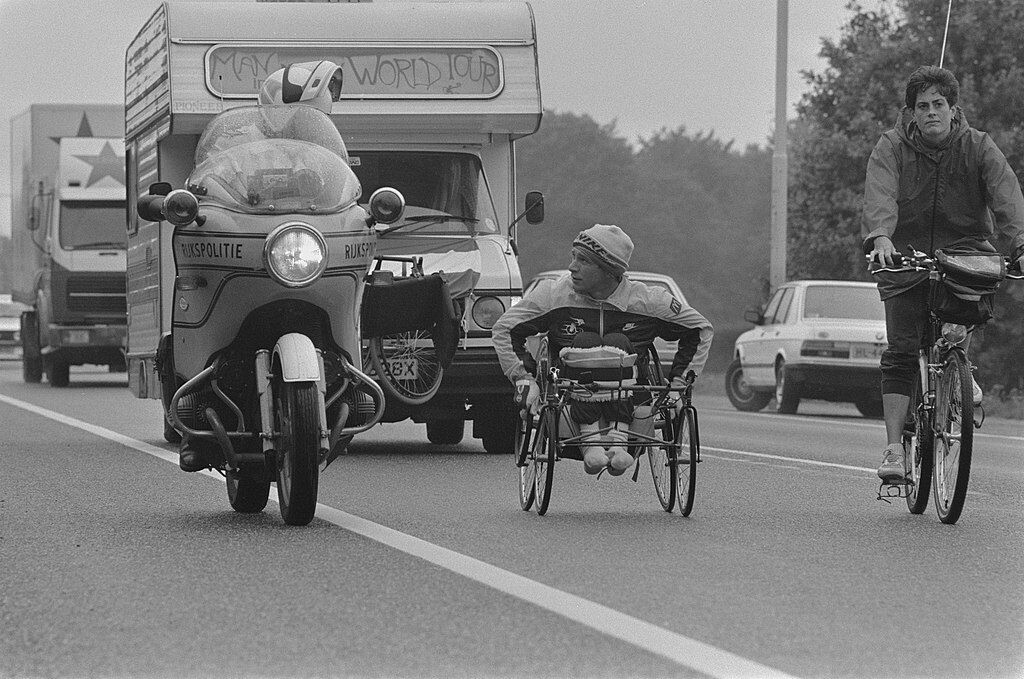
The race was called the National Capital Marathon and was won “by accident” by Quebec middle-distance runner Mehdi Jaouhar, who entered the race with his roommate. Only three of the 146 finishers were women.
1976: The Ottawa Marathon champion had lunch with the Queen
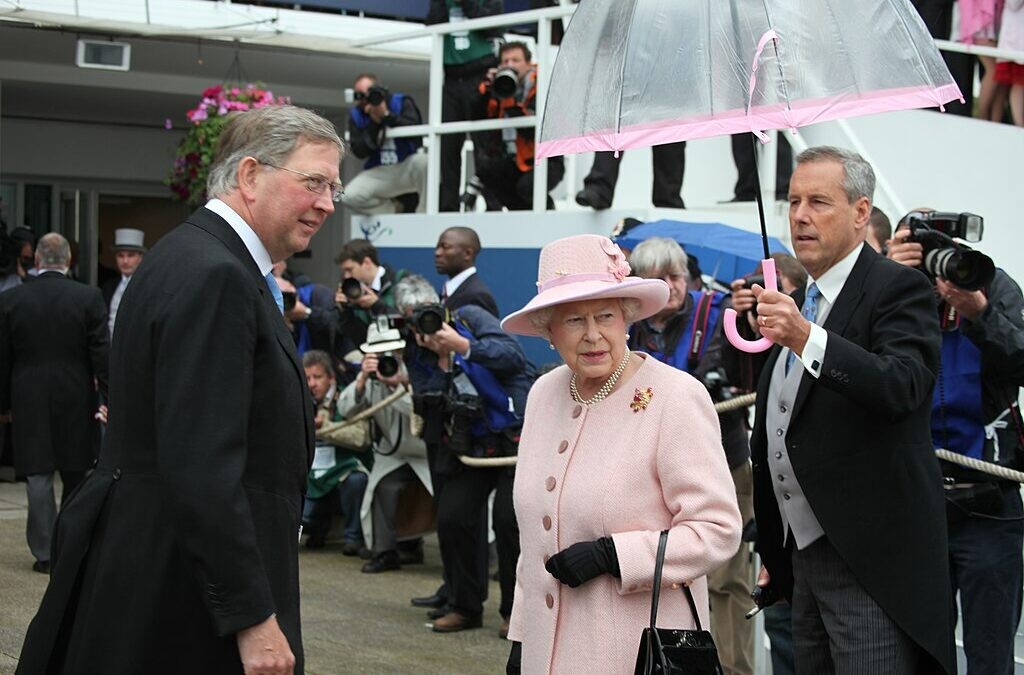
This year was a special one for athletics in Canada, as the country hosted the 1976 Summer Olympics (still the only Summer Olympics our nation has hosted to date). The marathon quadrupled in size from the previous year, and the stakes and competition rose accordingly. The race was selected as the location for the 1976 Olympic Trials for the Canadian marathon team, attracting some of Canada’s top marathoners.
Toronto’s Wayne Yetman set a new course record of 2:16:32, earning a spot on the Canadian Olympic team for Montreal. Also included in his Olympic moment was lunch with Queen Elizabeth. Eleanor Thomas won the women’s marathon for the second year in a row, yet she didn’t take in any water or electrolytes on the course. Thomas was a smoker at the time, and famously said “quitting smoking was harder than running a marathon.”
1983: Man in Motion Rick Hansen raced the Ottawa Marathon
In preparation for his famous Man in Motion World Tour, Rick Hansen won the inaugural wheelchair division at the Ottawa Marathon in 1983. Previously, wheelchair athletes competed in the open field. Hansen was the pioneer of the wheelchair division in Canada after winning gold, silver and bronze medals at the 1980 Paralympic Games. He became the first Canadian Para athlete to win the wheelchair division at the 1982 Boston Marathon.
Between 1985 and 1987, Hansen wheeled more than 40,000 kilometers around the world through 34 countries to raise awareness about people with disabilities. The world tour started and ended on the Port Mann Bridge in Vancouver.
1986: The marathon almost ended
After a major decline in numbers in 1984 and 1985, race organizers and the board of directors voted to cancel the event. The marathon faced new competition with the Montreal Marathon earlier in the spring, and Ottawa was having trouble attracting sponsors. However, after the cancellation announcement new sponsors emerged and organizers were able to move forward and add a 10K race.
The first Ottawa 10K attracted just fewer than 1,000 participants, but by 1988, that number doubled and continues to grow today as the premier event on Saturday of Ottawa Race Weekend.
4: Montreal’s Jean Lagarde won 4 straight marathons between 1993 and 1996
Lagarde had come to Ottawa to cheer on his friend in the marathon, but when he got there, the friend persuaded him to sign up. Lagarde thought, “Why not?” By eight kilometres, Lagarde was out front and on his own, and he held on to win his first of four straight Ottawa Marathons. Lagarde trained for the marathon by running 35 km every Sunday.
Lagarde’s best time in Ottawa was in 1994, when he ran 2:19:00. He also holds another impressive record, winning both the warmest and the coldest Ottawa Marathon to date (25 C and 1 C). Keep in mind that the date of the marathon at the time was the second week of May. He is still the only man to win four consecutive Ottawa Marathons.
Russian-Canadian runner Lioudmila Kortchaguina has also won the marathon four times, holding the record for the most women’s titles. She has raced the Ottawa Marathon more than 20 times, and she was the last Canadian woman to win (in 2007) until Kinsey Middleton won in 2022.
1995: The race weekend had an inline skating race
To boost registration numbers and add a Canadian twist to Ottawa Race Weekend, organizers held the inaugural inline skating 8K at the 1995 Ottawa Marathon. Hundreds of participants signed up with their skates, gloves and helmets to skate a timed portion of the course.
The inline 8K race didn’t last long; it was canceled the next year due to frosty conditions.
1998: Ottawa was the first Canadian marathon to have pace bunnies
Where did pace bunnies come from? Well, the Chicago Marathon was the first race to implement pace bunnies in North America. After Hilda Beauregard of Ottawa participated in the 1997 Chicago Marathon, she noticed that the race had provided pace bunnies in the mass field to help runners achieve their goal times. The runner brought the idea back to Ottawa, and the 1998 Ottawa Marathon became the first Canadian marathon to use pace bunnies.
Every year since, pace bunnies have been a regular component of the marathon, wearing caps with rabbit ears while holding marked signs with the projected finishing time, helping runners hit their goals.
1996: There was a blizzard during the marathon
Though temperatures are typically warm for the Ottawa Marathon, which is in late May, there was snow for the 1996 race. Four thousand runners experienced below-zero temperatures and 35 km/h winds, with snow squalls. The 1996 race still stands as the coldest marathon in the event’s history.
2010: Paralympian Rick Ball achieved a single-leg amputee marathon world record in Ottawa
At the 2010 Ottawa Marathon, Rick Ball of Orillia, Ont., became the first single-leg amputee athlete to run a sub-three-hour marathon. Ball clocked 2:57:48 to break the world record. He held onto that record for seven years, until it was broken in 2017 by Lebanon’s Eitan Hermon at the 2017 Vienna Marathon, who finished in 2:56.53.
49 years of Ottawa Marathons
Ottawa’s Howard Cohen has completed his local race every year since the inaugural marathon in 1975. The retired physician has never missed a race, overcoming various challenges such as the 30 C heat threat that almost canceled the marathon in 2016, enduring a snowstorm in 1996, and even completing the 42.2K race with canes due to a torn hamstring injury.
Cohen has consistently found a way to make it to the start line and cross the finish. At 73, he has participated in the event virtually for the past four years, with his last in-person race dating back to 2019. Cohen was the first runner to register for the 2024 Tartan Ottawa International Marathon virtually, which will mark his remarkable 50th race.
(12/29/23) Views: 121Marley Dickinson
Noah Lyles returns to training with plans for explosive start to 2024
Noah Lyles is not playing about winning an Olympic quadruple since he is already back in training.
Triple World champion Noah Lyles is back in training as he seeks an Olympic quadruple at next year’s Olympic Games in Paris, France.

The 26-year-old shared a video on his X (Twitter) lifting the heaviest weight (125kg) for the first time and he seemed to do it pretty well. He captioned the video saying: “Tried my max (125kg).”
The American has enjoyed a great 2023 season, winning triple gold at the World Championships in Budapest, Hungary.
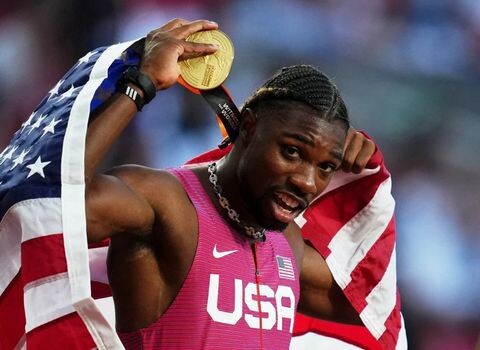
He started his winning streak by bagging gold in the 100m, beating Botswana’s Letsile Tebogo and Great Britain’s Zharnel Hughes to second and third place respectively.
He then proceeded to defend his World 200m title before propelling the American 4x100m men’s relay team to victory.
The Olympic Games next year surely promise to be a thrilling showpiece, especially in the men’s sprints where each runner will be going for the top prize.
Lyles has already fired warning shots at his opponents and in an interview with World Athletics, he said: “I’m not different. I’m still the same Noah. If anything, I’m more hungry than before because I’ve proved to myself that I can do it, so now I’m even more eager to do it for next year. It’s almost like another fire has been ignited for next year.
“I was talking to a close friend and he's like: 'I already know you're going to win three golds at the Olympics. I want you to win four. I remember when you were in high school, I watched you at Penn Relays go from second to last to first in the 4x400m, chasing down all those Jamaicans - there's your fourth medal.
“I've never had somebody tell me something that has thrown my out-of-the-box thinking to inside-the-box, but that was like: okay, I'm not going to say no to that. Because after what I did at Budapest and seeing what my body could handle, if I train for it, okay, let's take a shot. If they allow me, if they need me and they are willing - let's go, let's take it,” he said.
(12/29/23) Views: 111Abigael Wuafula
World 5km record falls to Beatrice Chebet
Kenyan clocks 14:13 at New Year’s Eve event in Barcelona to take six seconds off Ejgayehu Taye’s mark
Beatrice Chebet ended 2023 in style with a world 5km record of 14:13 on the roads of Barcelona in the Cursa dels Nassos event on New Year’s Eve.
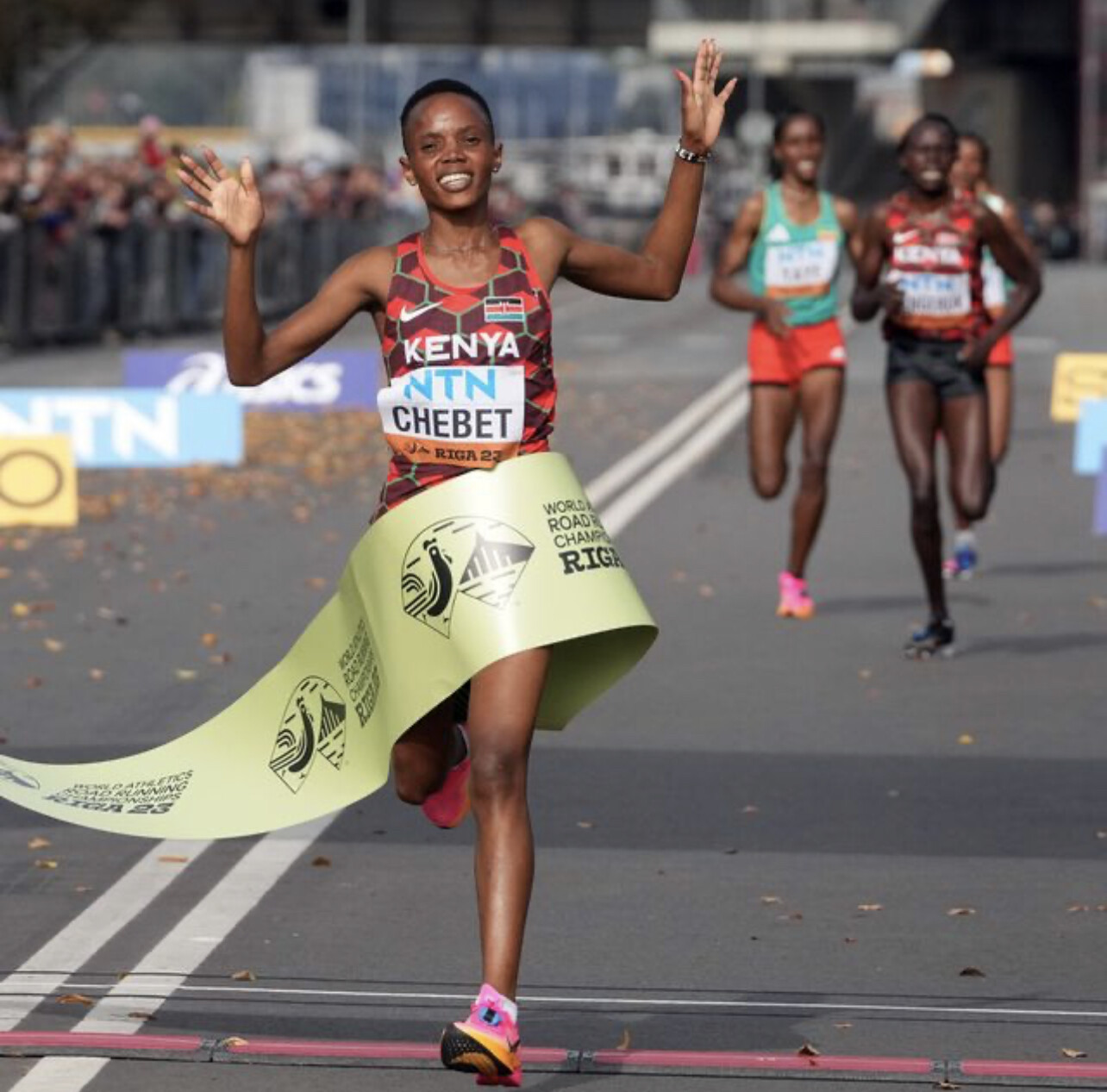
Runner-up was Ejgayehu Taye in 14:21 with Lilian Rengeruk third in 14:25.
Taye held the previous world 5km record with 14:19 from the same Cursa dels Nassos from 2021, although Taye’s run two years ago came in a mixed gender race.
On Sunday (Dec 31) Chebet’s performance therefore not only beat Taye’s mark but smashed the women-only world record of 14:29 which was set by Ethiopia’s Senbere Teferi in Herzogenaurach in September 2021
(01/01/24) Views: 106Jason Henderson (Athletics Weekly)
French trail running champion dies in ski mountaineering accident
French skyrunning champion Esteban Oliviero, 22, has died after a ski touring accident in the French Alps. Oliviero was on the descent after a ski touring ascent of La Blanche in the Ecrins massif, BNN reported, and was found after his roommates alerted emergency services when he had not returned by nightfall.
Originally from Var, France, Oliviero had recently moved to the Ecrins Massif area to pursue his passions for both trail running and mountaineering.
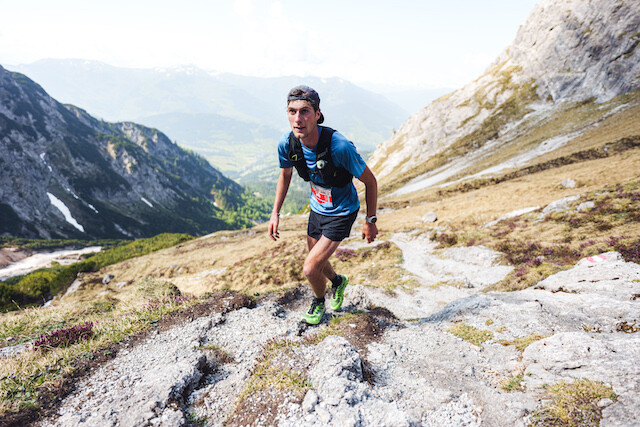
Oliviero had established himself as a remarkable trail runner with notable achievements despite his young age. In June 2023, Oliviero took first at the Grand Trail des Acrins 34K race in Vallouise, France, won the Hochkönig Skyrace 50K in Maria Alm, Sweden, won the French U23 Trail Running Championships and was ninth at the Grigne SkyMarathon.
He was beloved not only among his athletic peers, but also for his role as a summer caretaker at the Nice refuge in Mercantour, France.
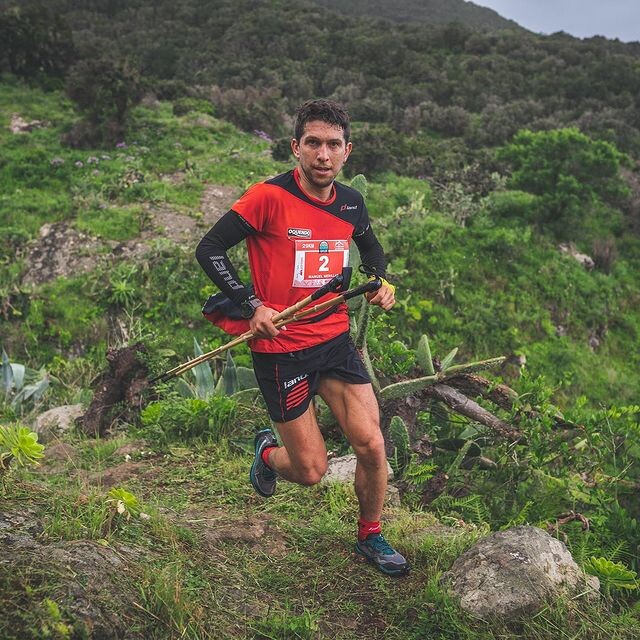
The French Athletics Federation (FFA) expressed condolences, sharing on their website that “the entire trail running community in France and elsewhere is mourning the death of an athlete highly esteemed by his peers. Esteban will leave a great memory.” Olivier was known not only for his racing ability but his kind and joyful nature. “A runner recognized for his talent during the effort but also during the post-race moments, his smile and his infectious good humor made him a much-appreciated comrade,” they added.
Olivier ran for the UK-based shoe company, Inov8 France, who expressed their sadness over Olivier’s death on social media: “Esteban was a brilliant mountain runner and a fun, honest young man. He will be sadly missed by many.”
The news of Oliviero’s death has prompted an outpouring of tributes across the global athletic community. “You will be with us on every start line and on every summit,” the Skyrunner World Series shared on Instagram. Florent Besses, coordinator of the National Excellence Ski Mountaineering Group (GESAN) where Oliviero was a member, paid homage to his exceptional qualities and deep connection to the mountains on the GESAN website. “Despite his very high level, he was simple and humble, with an infectious joy, very invested in the group. A bon vivant, far from the image of the ascetic. His disappearance is very hard to bear.”
(12/29/23) Views: 103Keeley Milne
Three weird ways to break out of your post-holiday slump
Dealing with the post-festive slump (or a running rut at any time of year) can be challenging, and you may feel tempted to scream when people offer the same old helpful ideas (like preparing your running clothes the night before–even though it works!). Injecting these unique training sessions into your routine will bring a refreshing boost and keep you motivated.
Inviting a friend along will make any of these workouts doubly enjoyable—you might feel self-conscious at first, but you’ll be pleasantly surprised at how quickly time flies.

1.- Mystery route roulette
Turn your run into an adventure, letting chance guide your path. Write down a few of your favourite local running routes and distances on pieces of paper, throw them into a hat, and draw one before a run. The element of surprise will inject some excitement into your run while making the outing a unique exploration.

2.- Run-doku challenge
Combine the brain-teasing challenge of Sudoku with a fantastic fartlek workout. Before your run, solve a Sudoku puzzle (there are lots of beginner ones online). Choose one of the nine grids on the Sudoku puzzle to use as inspiration for your training session.
As you run, follow the Sudoku pattern and change your pace or focus based on the corresponding numbers. Sprint during “5” segments, jog during “2” segments, and so on. This creative twist adds a mental aspect to your run, making it a dynamic and entertaining challenge.
3.- Instagrammable running challenge
Tap into your creative side by turning your run into an Instagram scavenger hunt—bonus points if you can rope some friends into competing against you (or running with you). Set a goal to find and photograph specific items during your run—a red door, a street sign with your name on it, a specific model of car, a maple tree, a pickup truck with a snowplow on the front, someone wearing a pink hat, or even a friendly neighborhood cat.
Sharing your unique finds on social media can transform your run into a fun visual story to look back on for inspiration whenever you don’t feel like putting on your shoes.
(12/29/23) Views: 103Keeley Milne
Kelvin Kiptum expresses desire to run historic sub-two-hour marathon in Rotterdam
Reigning Chicago Marathon champion Kelvin Kiptum will be seeking to become the first man to run a marathon in under two hours and be recognized by World Athletics.
World marathon record holder Kelvin Kiptum is not resting on his laurels as he looks to dethrone the marathon kings and make history this year.
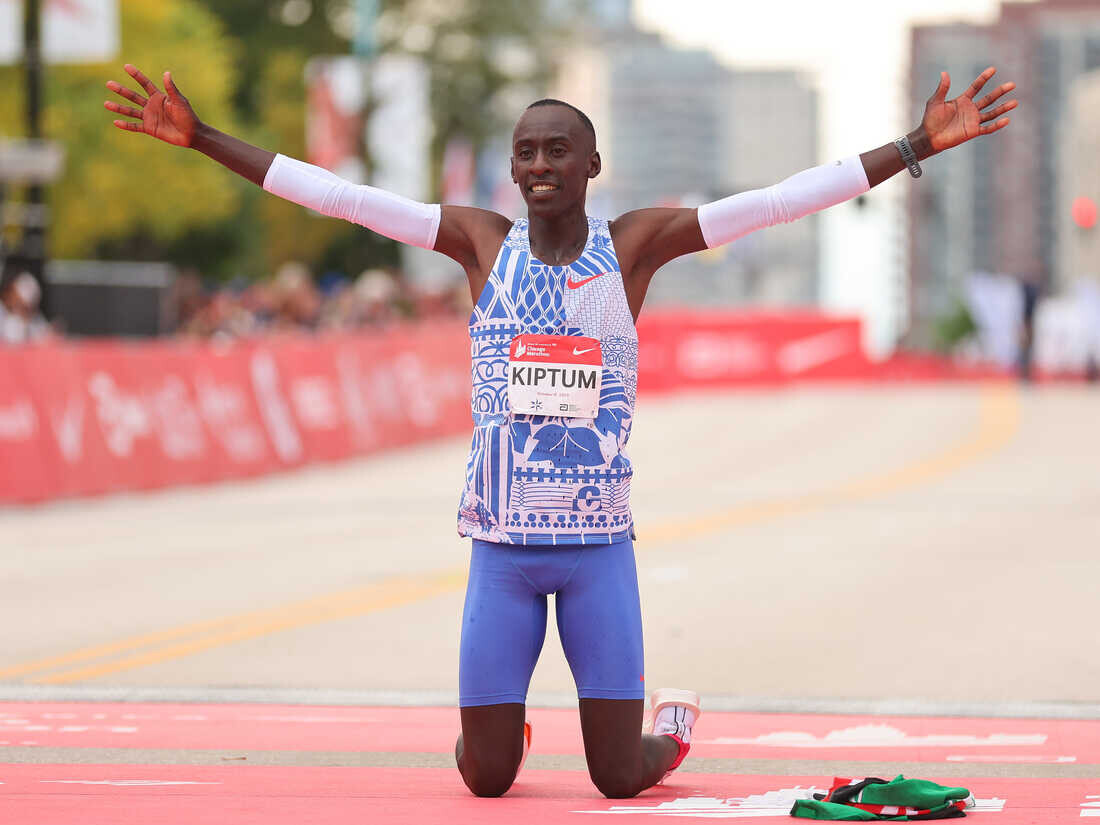
Kiptum, the reigning Chicago Marathon champion will be opening his season at the Rotterdam Marathon where he hopes to break the sub-two-hour marathon barrier.
Speaking to Gulf Times, the Kenyan explained that for now, his training and thoughts are on the marathon and he will be seeking to become the first man to ever run the marathon in under two hours with the recognition of World Athletics.
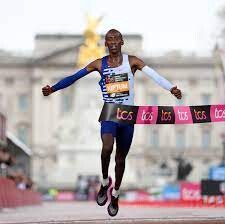
Eliud Kipchoge was the first man to run a marathon in under two hours, however, his effort did not count as a new world record under World Athletics rules due to the setup of the challenge.
“It’s already known, the Rotterdam Marathon on April 14. I would like to grow further, and so, inevitably, break the barrier," the reigning London Marathon champion said.
"I’ll go there to run fast; the course is ideal and the crowds in the streets push you to give your best. I would love to be a part of the rich history of this marathon.
“If the preparation goes in the right direction, with peaks of 270 kilometers per week, and the weather conditions permit, I will go for it [sub-two]."
Kiptum has enjoyed a remarkable 2023, breaking the men’s marathon world record where he took 34 seconds off the previous record in winning the Chicago Marathon in two hours and 35 seconds.
He also won the London Marathon in April in 2:01:25, which at the time was the second-fastest time ever.
He noted that he will be competing at the Rotterdam Marathon because the organizers of the race are linked to his management.
“In 2022 I was supposed to run it, to make my debut but a slight injury stopped me. This will be the right time,” he said, adding that one of his other goals is to compete at the 2024 Olympic Games in Paris.
“As a team, we will collaborate, but then everyone looks out for themselves.
“I could also aim for the Tokyo 2025 World Championships, I saw the race in Budapest which fascinated me,” he added.
(01/02/24) Views: 90Abigael Wuafula





